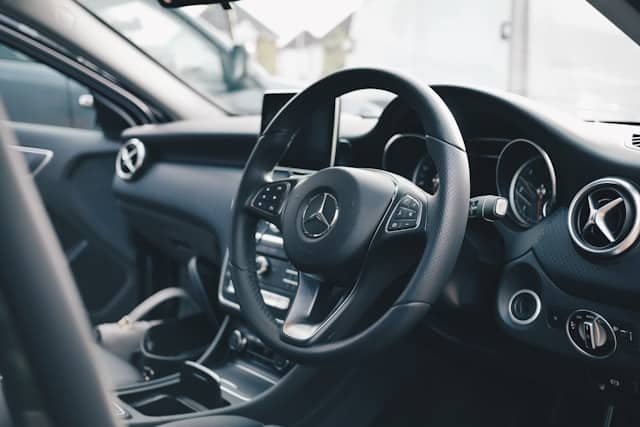How to Protect Your Car’s Interior During Collision Repairs
 When your car enters the shop for collision repairs, the focus is often on restoring the exterior—dings, dents, and paintwork. However, safeguarding the interior is just as vital for preserving your vehicle’s value and ensuring your comfort once repairs are complete. At Chaney’s Collision Centers, attention to your car’s interior is part of our promise. Discover how to keep your vehicle’s cabin protected during the repair journey.
When your car enters the shop for collision repairs, the focus is often on restoring the exterior—dings, dents, and paintwork. However, safeguarding the interior is just as vital for preserving your vehicle’s value and ensuring your comfort once repairs are complete. At Chaney’s Collision Centers, attention to your car’s interior is part of our promise. Discover how to keep your vehicle’s cabin protected during the repair journey.
Why Interior Protection Matters
Bodywork and painting processes generate dust, debris, and fumes that can penetrate your car’s cabin if precautionary steps aren’t taken. Chemicals, solvents, and even the tools used in repairs may leave lasting marks or unpleasant odors inside. Ensuring robust interior protection not only keeps your upholstery pristine but also guards electronics, trims, and sensitive materials from damage.
Key Protection Strategies
Use High-Quality Protective Coverings
- Seat Covers: Durable, non-slip seat covers shield upholstery from dust, oils, and accidental spills. They are quick to install and essential for keeping seats clean.
- Floor Mats and Carpet Covers: Plastic sheeting or layered paper mats absorb debris, prevent staining, and reduce wear on carpeting during frequent technician access.
- Steering Wheel and Console Covers: Specialized coverings for the steering wheel, dashboard, and gear lever prevent dust buildup and protect delicate surfaces from scratches and chemical splashes.
- Vent and Panel Protection: Taping off air vents and covering open doors or windows—especially when these parts are disassembled or removed—guard against dust and paint overspray infiltrating the interior.
Maintain Regular Cleaning
- Routine Cleaning: Even with covers, some dust may sneak in. Daily vacuuming and wiping down high-contact areas like door panels and dashboards prevent cumulative buildup.
- Post-Repair Detailing: Once work is finished, a deep clean or professional detailing session will eliminate any remaining particles or chemical residues, ensuring your interior looks and smells fresh.
Prioritize Ventilation and Air Quality
- Air Out the Vehicle: When possible, keep windows slightly open to allow air circulation—especially if painting or strong solvents are used. This helps dissipate fumes and reduces lingering odors.
- Use Air Purifiers: Placing a portable HEPA air purifier inside can capture any fine particles and maintain cabin air quality during extended repairs, safeguarding against airborne contaminants.
Communicate with Your Shop
- Set Expectations: Before repairs begin, discuss your expectations for interior protection. Ask your repair shop what specific measures they will implement and request additional protections if needed.
- Check Practices: A quality collision center will automatically include robust interior protection as part of their service. Don’t hesitate to inquire about their methods and review customer feedback for peace of mind.
Extra Tips for Owners
- Remove Valuables: Take out all personal items before handing over your car. This not only prevents loss but also allows technicians to protect all surfaces thoroughly.
- Document the Interior: Snap photos of your car’s interior condition prior to repairs. This will help address any issues that may arise post-repair.
Conclusion
Preserving your car’s interior during collision repairs requires a proactive approach from both you and your repair shop. With the right combination of professional covers, cleaning routines, ventilation, and open communication, you can ensure your vehicle returns to you as comfortable and clean as it was before the incident. At Chaney’s Collision Centers, safeguarding every inch of your vehicle—from exterior panels to the finest upholstery—remains our top priority.

